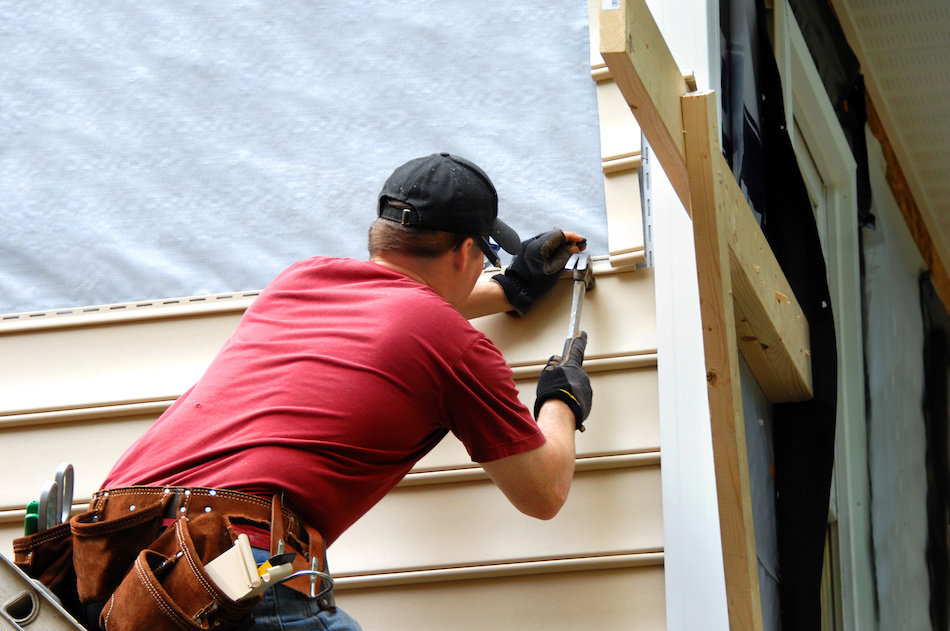What You Need to Know About Home Siding Replacement
Posted by Justin Havre on Wednesday, December 12th, 2018 at 9:30am.
 Siding boasts some of the highest returns of any home improvement project, with certain materials boasting an average of up to 89% returns. But home siding replacement isn't just a smart idea to improve the resale value of the home, it can also be a way to improve the safety of the people within it. Siding not only keeps out water and insects, it can also protect the interior of the home so it can stay strong against natural and man-made threats alike. Before getting started, consider the following basic facts about home siding replacement.
Siding boasts some of the highest returns of any home improvement project, with certain materials boasting an average of up to 89% returns. But home siding replacement isn't just a smart idea to improve the resale value of the home, it can also be a way to improve the safety of the people within it. Siding not only keeps out water and insects, it can also protect the interior of the home so it can stay strong against natural and man-made threats alike. Before getting started, consider the following basic facts about home siding replacement.
The Costs of Replacing Siding
For homeowners who have the flexibility to change the material of their siding, it helps to keep in mind not only the cost of the materials but also be costs of installation. For example, homeowners can expect to pay up to $22,000 total for stucco, wood, or fiber cement. Vinyl and engineered wood siding cost about half the price, while synthetic stone can cost double for the whole home. The exact cost of installation will depend on not just the square footage, but also the location and the condition of the home.
Environmental Benefits
Sustainable building technologies and materials are increasingly popular in home building. The options for environmentally friendly siding have certainly improved over the past few years, so owners may want to consider thinking outside the box when it comes to the materials on the market. Now there are companies who turn old bark into engineered bark siding, and there may even be ways to buy quality siding made from old newspapers in the future. Wood, synthetic stone, or engineered wood are all good choices for those looking to reduce their footprint. They're either renewable sources of energy or use responsible manufacturing methods. Even stucco uses raw Earth and lime to hold its own rather than the traditional Portland cement.
Popular Siding Replacement Material Options
As discussed, there are pros and cons and various cost considerations of home siding options. However, some of these are more popular as replacement materials than others. One top choice is fiber cement siding, which is fairly costly but is highly resilient and fire and insect resistant. Right behind fiber cement in popularity is vinyl siding, which is less resilient to impact but is far more affordable. If choosing vinyl siding, it’s recommended to invest in an insulated type that can help reduce heating and cooling costs.
Another favorite is engineered wood siding that gives the home a classic look that melds with the natural environment. Engineered wood has added materials to the composition to help the material better resist fire, pests and the elements. Available in an array of colours, grain styles and textures, and it can be re-stained when owners are ready for a change. Stucco siding is another option for those seeking a natural look reminiscent of the Southwest. However, stucco can be somewhat high maintenance in Canada’s cooler climates and it’s costly to install.
Brick siding is another option that remains dominant in the market today. Not only is brick known to last for decades and have the ability to withstand the elements, it also allows owners to have a good deal of design freedom due to brick’s versatility and wide selection of colours. Natural stone siding is one of the most expensive options and is highly time consuming to install. However, those seeking the same look of stone without paying a premium price should consider fabricated stone siding. Regardless of choice, both options offer a solid return on investment and add beauty to any home.
Environmental Disadvantages
Materials such as vinyl are known for being two materials that can cause long-term trouble for the Earth. While vinyl is extremely durable and cost-efficient, the chemicals and plastics that compose the vinyl will cause it to sit in a landfill for many years to come. Fiber cement is ultimately a better choice than vinyl in terms of production methods, but it still requires the decarbonization of limestone (which will produce greenhouse gases.) It should be noted that advanced recycling and production methods may solve these problems soon, but it is currently still an issue that homeowners to be aware of.
Home Siding Maintenance
Homeowners who want a relatively hassle-free experience from their siding should choose vinyl or metal. These materials are built to go the distance so that homeowners can just enjoy the fruits of their labor. Wood will need to be treated about once every five years or so, and stucco is notoriously attractive to woodpeckers and notoriously resistant to stains. For the most part, siding doesn't have to be inspected very often, but City Centre homeowners should know the most common threats. For example, vinyl siding can become loose and wood siding can let in moisture or pests. Painted metal can require multiple repaints if it starts to peel or crack, and the metal underneath may rust through if it's not sealed.
Homeowners should talk to a pro before placing their siding, if only to get their own specific questions answered. Homeowners will also need to keep in mind the general look of the neighbourhood to keep up their curb appeal, as well as the most practical choice of siding for the structure itself.

